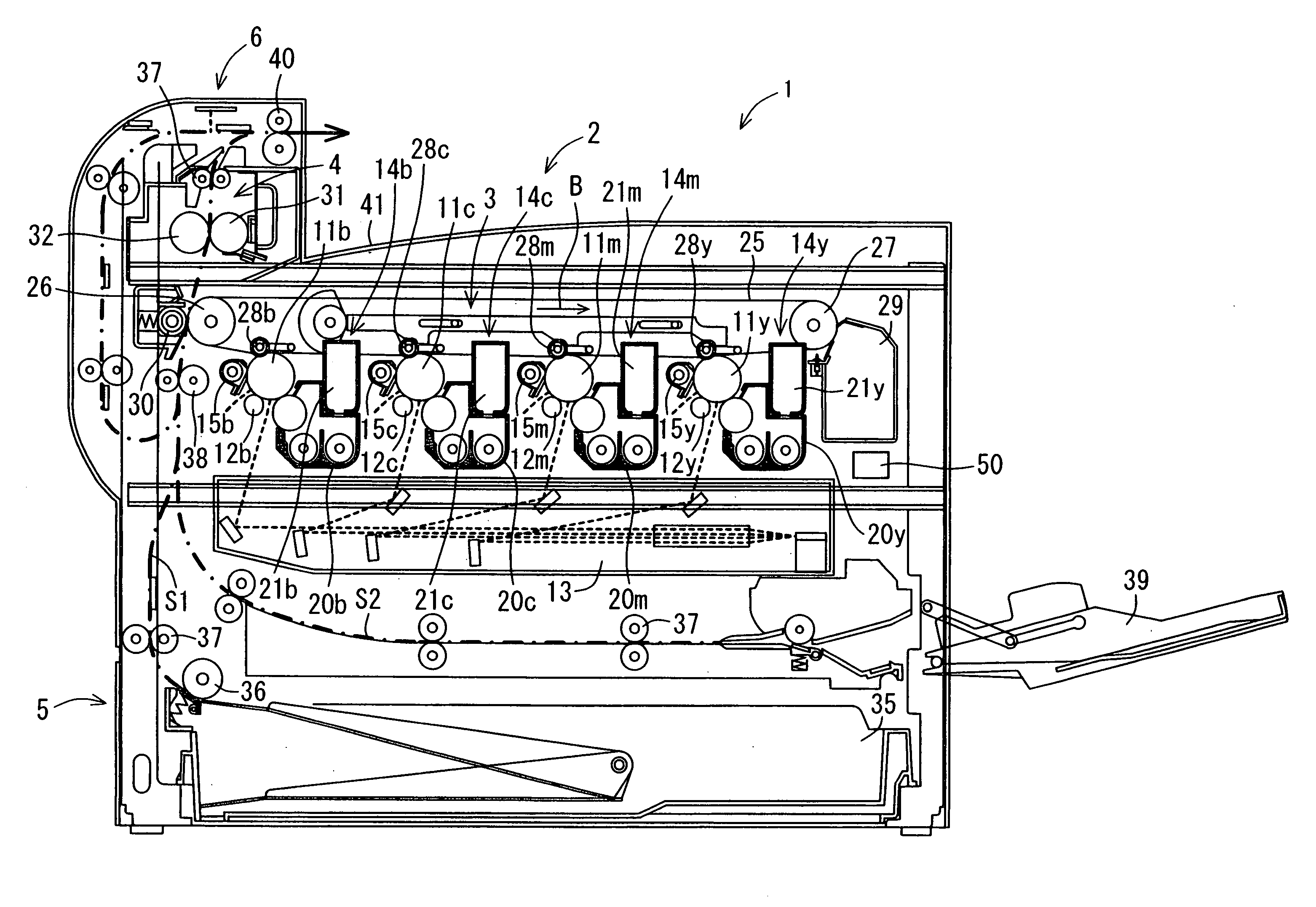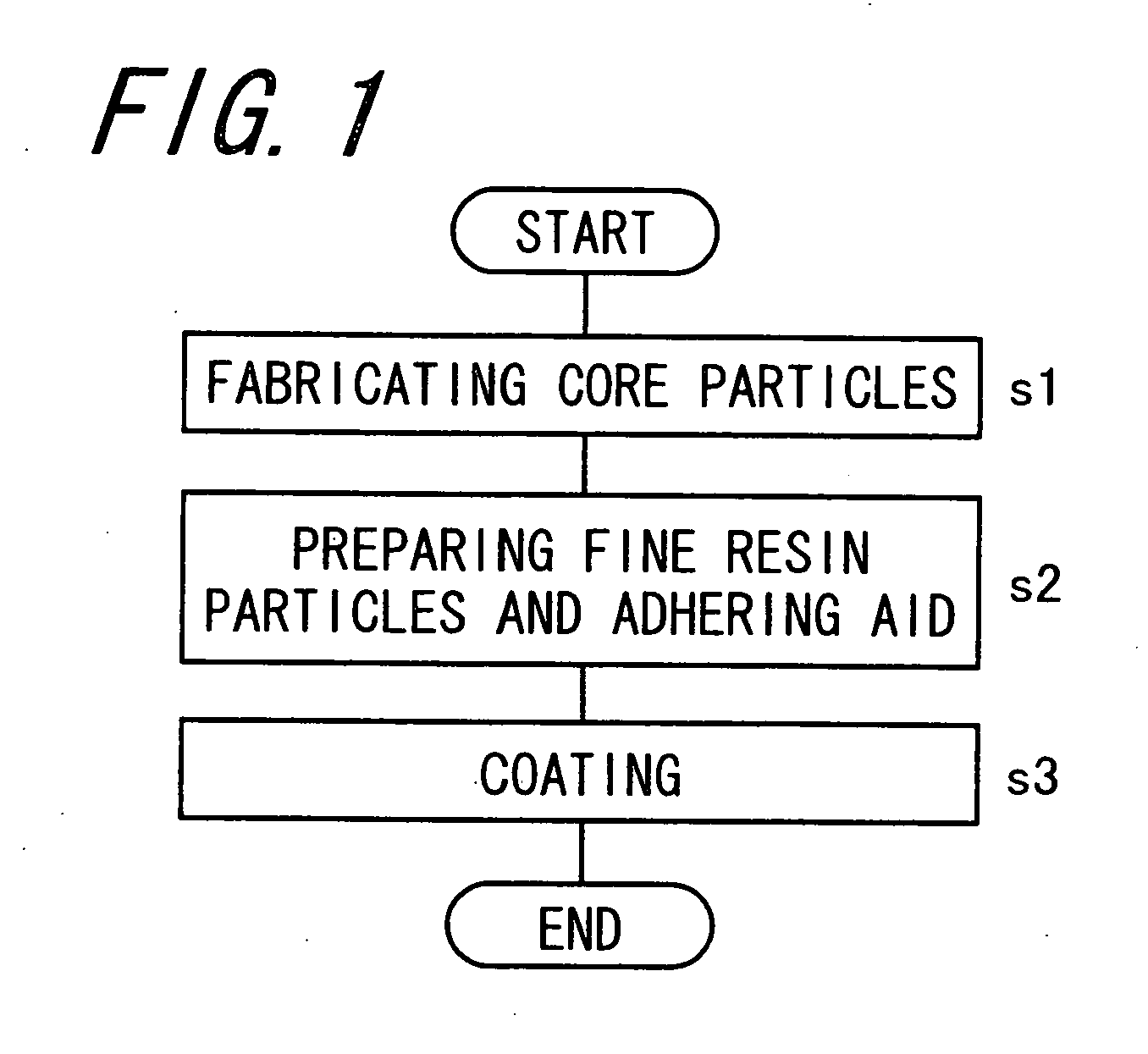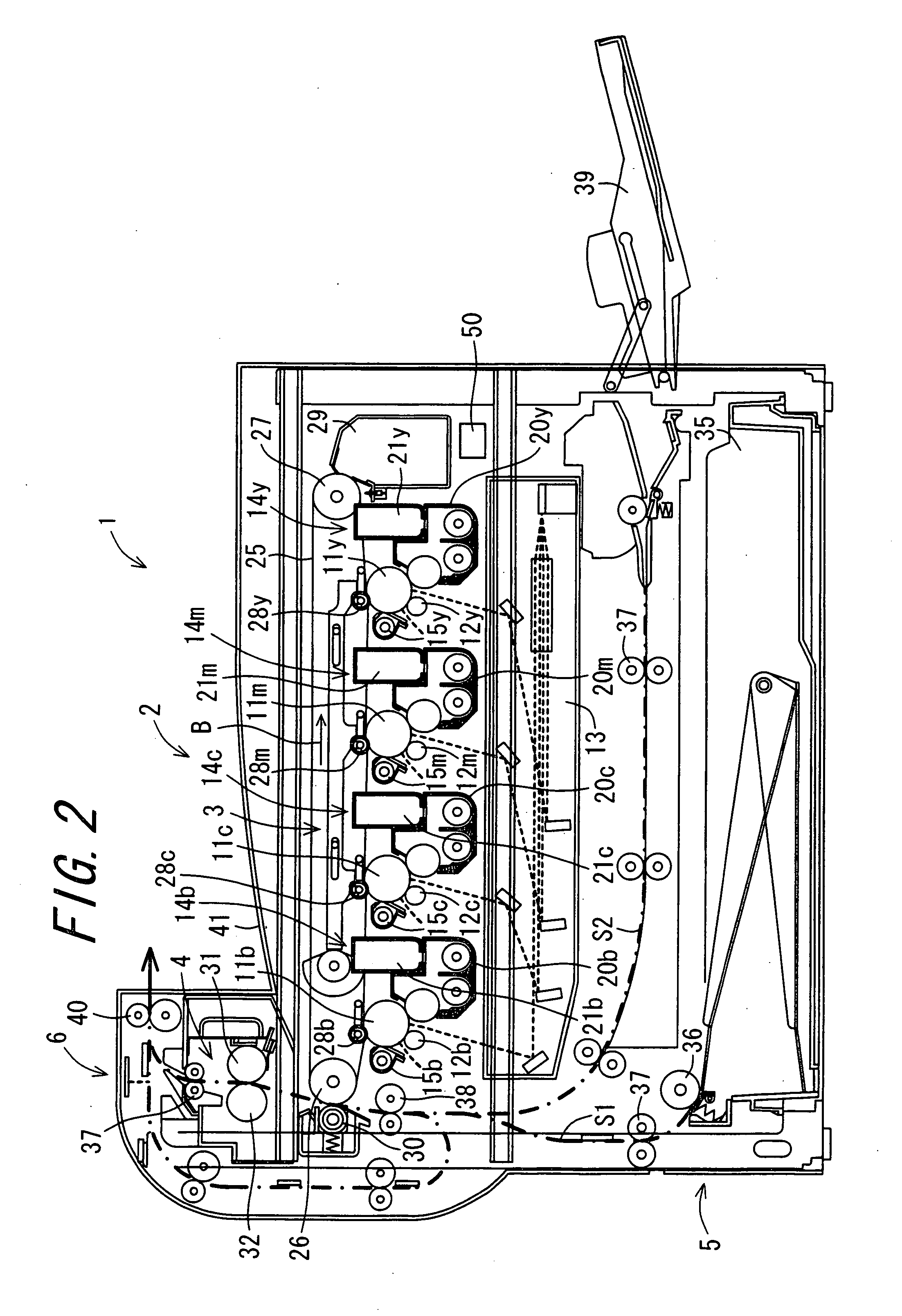Toner and method of manufacturing the same, two-component developer, developing apparatus, and image forming apparatus
- Summary
- Abstract
- Description
- Claims
- Application Information
AI Technical Summary
Benefits of technology
Problems solved by technology
Method used
Image
Examples
example 1
Step of Fabricating Core Particles
[0178]Raw material monomers were synthesized with the aid of catalyst to obtain polyester resin. The raw material monomers were specifically 400 parts of polyoxypropylene(2.0)-2,2-bis(4-hydroxyphenyl)propane, 380 parts of polyoxyethylene(2.0)-2,2-bis(4-hydroxyphenyl)propane, and 330 parts of terephthalic acid. The catalyst was specifically 3 parts of dibutyltin oxide. The polyester resin thus obtained had a glass transition temperature (Tg) of 64° C. and a softening temperature (Tm) of 95° C. And then, as a colorant, copper phthalocyanine (C.I. pigment blue 15:3) was added to the polyester resin. A thus-obtained material was melt-kneaded for 40 minutes by a kneader set at 140° C. As a result, a master batch was obtained which contains 40% by weight of the colorant. Note that polyoxypropylene(2.0)-2,2-bis(4-hydroxyphenyl)propane is an adduct in which 2.0 mol of propylene oxide is added on average to 1.0 mol of 2,2-bis(4-hydroxyphenyl)propane, and pol...
example 2
[0186]A toner of Example 2 was obtained in the same manner as Example 1 except that the step of preparing the fine resin particles and the adhering aid and the step of coating were modified as follows. The toner of Example 2 had a volume average particle size of 7.3 μm and a coefficient of variation of 26.
[0187](Step of Preparing Fine Resin Particles and Adhering Aid)
[0188]Using a homogenizer: Polytron PT-MR3100 (trade name) manufactured by Kinematica Inc., 20 parts of fine particles of styrene-methyl methacrylate copolymer having a volume average particle size of 0.4 μm and 80 parts of ethanol serving as the adhering aid were mixed with each other by agitation at a rotational speed of 8,000 rpm for 20 minutes, thereby preparing a coating solution which contains 20% by weight of the fine resin particles having a volume average particle size of 0.4 μm. To be specific, the fine particles of styrene-methyl methacrylate copolymer were MP-5000 (trade name) manufactured by Soken Chemical ...
example 3
[0191]A toner of Example 3 was obtained in the same manner as Example 1 except that the used fine resin particles were fine resin particles of styrene-methyl methacrylate copolymer having a volume average particle size of 0.2 μm and a glass transition temperature (Tg) of 102° C., which had been obtained by polymerizing styrene and methyl methacrylate. The toner of Example 3 had a volume average particle size of 7.1 μm and a coefficient of variation of 25.
PUM
 Login to View More
Login to View More Abstract
Description
Claims
Application Information
 Login to View More
Login to View More - R&D
- Intellectual Property
- Life Sciences
- Materials
- Tech Scout
- Unparalleled Data Quality
- Higher Quality Content
- 60% Fewer Hallucinations
Browse by: Latest US Patents, China's latest patents, Technical Efficacy Thesaurus, Application Domain, Technology Topic, Popular Technical Reports.
© 2025 PatSnap. All rights reserved.Legal|Privacy policy|Modern Slavery Act Transparency Statement|Sitemap|About US| Contact US: help@patsnap.com



